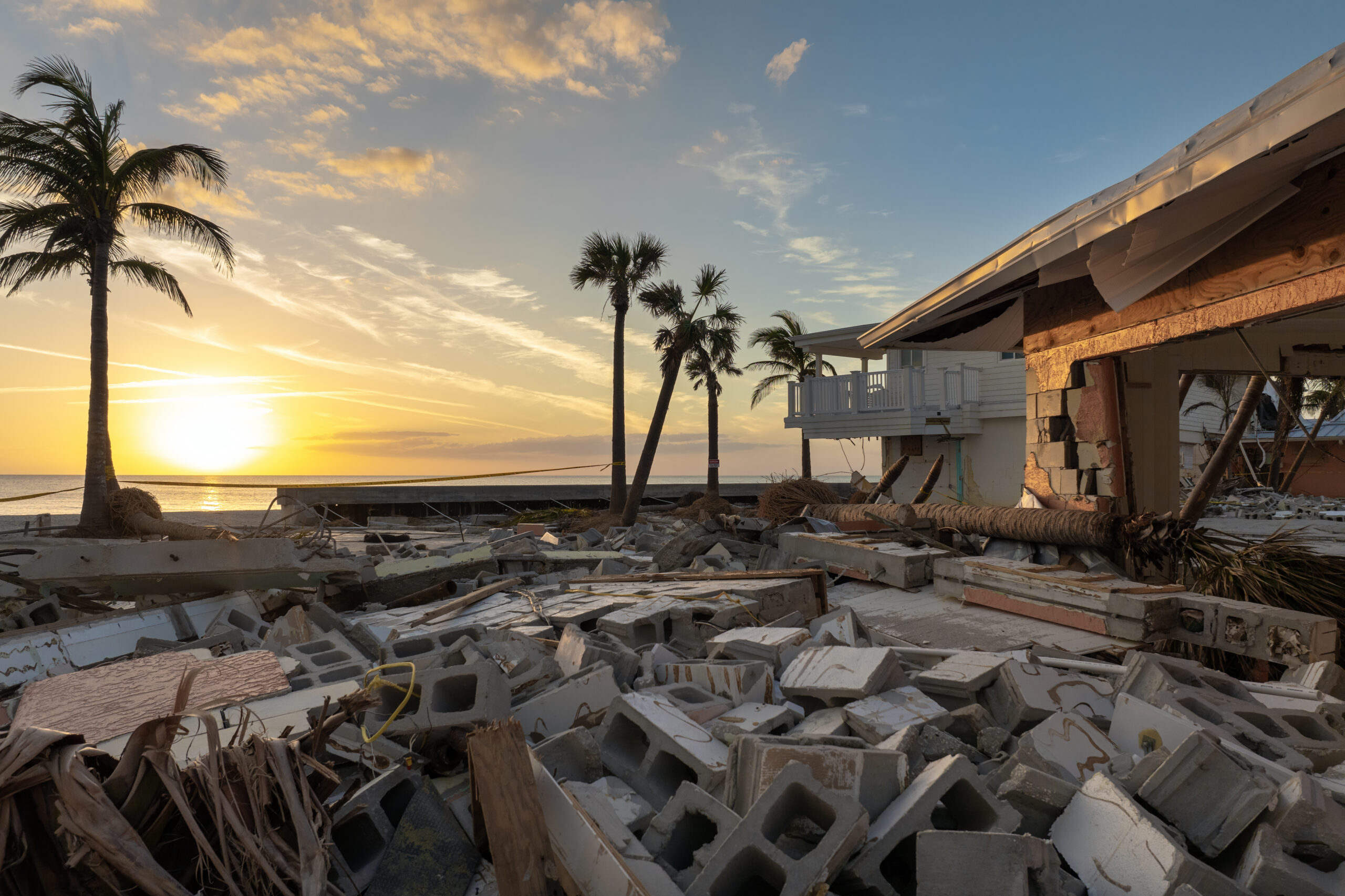As a long time Tampa resident, I’ve seen our community weather many storms - literally and figuratively. Hurricane Helene brought flooding that none of us expected, and for many, this is the first time facing such widespread damage. Whether it’s your home or business, it can feel like an overwhelming process.
This guide is here to help you take it step by step, ensuring you know what to do, who to contact, and how to keep things moving forward. From dealing with insurance claims to managing cash flow, we’ll cover all the key actions you need to take.
1. Ensure Safety First
- Evacuate if Necessary: If your home or business has sustained significant damage and the structure is compromised, evacuate the premises immediately. Avoid entering floodwaters, as they can be contaminated or hide hazards.
- Turn Off Utilities: If it’s safe, turn off electricity, gas, and water. This can help prevent fires, gas leaks, and further flooding.
- Document the Damage: Before starting any cleanup, take detailed photographs and videos of the damage. Document every area of your property—inside and out. This will be critical for insurance claims and potential FEMA assistance.
- Save Receipts: Any expenses incurred during the evacuation, such as hotel stays, meals, or supplies, should be documented and saved for reimbursement through insurance or FEMA.
2. Contact Your Insurance Provider
- File Your Claim Immediately: Notify your insurance provider as soon as possible. Expect delays, as many others will be filing claims at the same time. Be persistent and ensure that your claim is logged.
- Understand Your Coverage:
- Homeowners: Make sure your policy covers flood damage. If you do not have flood insurance, the National Flood Insurance Program (NFIP) may provide limited assistance.
- Businesses: Review your business interruption insurance (if applicable) to see what losses are covered due to operational disruptions.
- Schedule an Adjuster Visit: Your insurance company will send an adjuster to assess the damage. Be present during the visit to ensure all damages are noted and to provide your documentation.
- Communicate Clearly: Be clear about the extent of the damage, including hidden issues like mold growth, electrical damage, and structural concerns.
3. Apply for FEMA Assistance
- FEMA’s Role: If your area is declared a federal disaster zone, FEMA can provide financial assistance to help with recovery. This can include grants for temporary housing, home repairs, and other disaster-related expenses.
- How to Apply: You can apply for FEMA assistance online, through the FEMA app, or by calling the FEMA helpline. The process may take time, so apply as soon as possible after filing your insurance claim.
- What FEMA Covers: While FEMA grants are not a substitute for insurance, they can provide critical help for immediate needs such as temporary housing, medical expenses, or replacing essential personal property. Business owners may be able to apply for certain FEMA loans to cover uninsured losses.
4. Hire Professional Cleanup and Restoration Services
- Licensed Water Damage Restoration: After flooding, mold and structural issues can develop quickly. Engage a licensed and certified water damage restoration company to remove water, dry out the property, and prevent mold growth. Don’t attempt major cleanup on your own, especially if mold has started to grow or structural integrity is compromised.
- Professional Structural Assessments: For both homeowners and business owners, hire licensed professionals to assess the damage to foundations, walls, roofs, and electrical systems. These inspections are often required before you can begin rebuilding.
- Save Receipts: Keep a detailed record of all expenses related to cleanup and repairs. These can be submitted for reimbursement to your insurance company or FEMA.
5. Notify Utilities and Service Providers
- Power and Gas Companies: If power or gas lines have been damaged, notify your utility provider immediately. Do not attempt to repair these lines yourself.
- Telecommunications: Contact your internet, phone, and cable providers to report outages or damage. Restoration times may vary, but staying in the queue helps expedite the process.
- Water and Sewage: If water lines are damaged or sewage backups occur, contact local utility services to address these issues. Flooding can cause contamination in water systems, so follow local health advisories about water safety.
6. Temporary Housing and Business Continuity
- Temporary Housing for Homeowners: If your home is uninhabitable, check your insurance for loss-of-use provisions that may cover temporary living expenses. FEMA may also offer temporary housing grants.
- Business Continuity: For business owners, developing a business continuity plan is essential. If your physical location is damaged, consider remote operations or temporary relocation to keep the business running. Communicate with employees, customers, and suppliers to manage expectations and timelines for reopening.
7. Assess and Secure Additional Funding
- Homeowners: If your insurance coverage is insufficient, the SBA (Small Business Administration) offers disaster loans to homeowners for necessary repairs. These low-interest loans can help bridge the gap between what insurance pays and what’s needed for full recovery.
- Businesses: Business owners can apply for SBA disaster loans to cover physical damage, repair costs, and operational losses. Additionally, check if your business qualifies for state or federal disaster relief programs.
- Community Resources: Local community organizations, nonprofit groups, and even some employers may offer emergency grants or support for families and businesses in need.
8. Begin the Repair Process
- Hire Licensed Contractors: When hiring contractors for repairs, make sure they are licensed, insured, and have a solid reputation. Avoid hiring unlicensed workers, as post-disaster scams are common.
- Permits and Inspections: Check with your local government to determine if permits are required for the type of repairs or rebuilding you need. Inspections may be necessary before repairs can begin.
- Prioritize Critical Repairs: Focus on structural and electrical repairs first, as these are necessary for safety and getting back into your home or business.
9. Stay in Communication with Your Lender
- Mortgage and Loan Providers: For homeowners, notify your mortgage lender about the situation. Some lenders offer forbearance or other relief options in the wake of disasters.
- Business Loans: For business owners, stay in communication with your loan providers. They may offer deferred payments or temporary relief while you rebuild and recover.
- Rental Properties: If you’re a landlord, communicate with tenants about their needs and their rights during this time. You may also need to work with your insurance provider regarding loss of rental income and potential liabilities if your property is uninhabitable.
Recovering from a hurricane is never easy, but it’s something our community knows how to handle. The road ahead may feel long, but by tackling each step methodically - whether it’s securing funding, managing repairs, or keeping your business afloat - you’ll get through it.
Stay safe, stay focused, and remember: one step at a time gets you closer to recovery.




